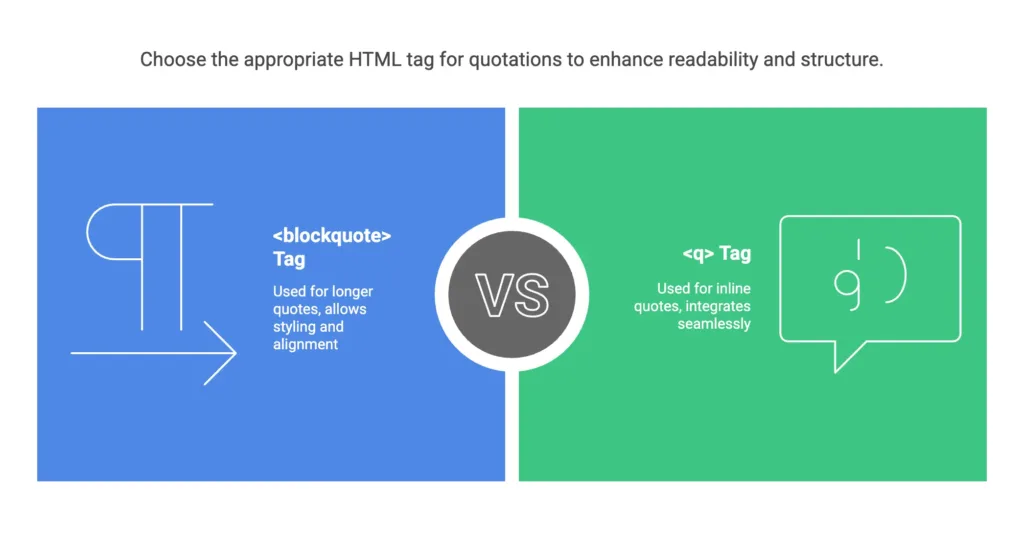Quotation in HTML
Quotations in HTML serve as a way to incorporate text from external sources into your web documents, adding credibility and context to your content. This chapter will explore two main types of quotations: inline and block quotations.

Basic Concepts
Inline Quotations (q)
- Definition: Inline quotations are used for short, concise quotes that can seamlessly fit within a paragraph.
- Example:
<p>The <q>quick brown fox</q> jumps over the lazy dog.</p>
Explanation: The <q> tag is used to surround the quoted text, providing a visual cue to the reader that this is a direct quote.
Block Quotations (blockquote)
- Definition: Block quotations are employed for longer passages, setting them apart from the surrounding text with added indentation.
- Example:
<blockquote>
<p>This is a longer quote that requires a block quotation. It can span multiple lines.</p>
</blockquote>
Explanation: The <blockquote> tag helps structure the content, making it clear that the enclosed text is a distinct quote.
Advanced Concepts
Citing a Source (cite attribute)
- Definition: The
citeattribute within the<q>tag allows you to provide a reference to the source of the quote. - Example:
<p>The sun is shining.<q cite="https://example.com">Source</q></p>
Explanation: Including the source helps maintain transparency and gives credit to the original author.
Nested Quotations
- Definition: You can nest quotations within each other for scenarios where multiple levels of quoting are needed.
- Example:
<blockquote>
<p>This is an outer quote.</p>
<blockquote>
<p>This is an inner quote.</p>
</blockquote>
</blockquote>
Explanation: Nesting quotes allows for a hierarchical structure, accommodating different levels of emphasis.
Abbreviations and Acronyms (abbr and acronym)
- Definition: Use the
<abbr>and<acronym>tags for abbreviations and acronyms, enhancing accessibility and understanding. - Example:
<p><abbr title="World Wide Web">WWW</abbr> is an important technology.</p>
Explanation: Providing expansions for abbreviations and acronyms improves user experience, particularly for those with accessibility needs.
Mastering the use of quotations in HTML is pivotal for creating well-crafted and informative web content. Whether you are quoting short phrases or incorporating extensive passages, HTML offers the tools necessary for clear and structured communication. Remember to utilize attributes like cite for proper attribution, and consider the context to decide between inline and block quotations. Happy coding !❤️
